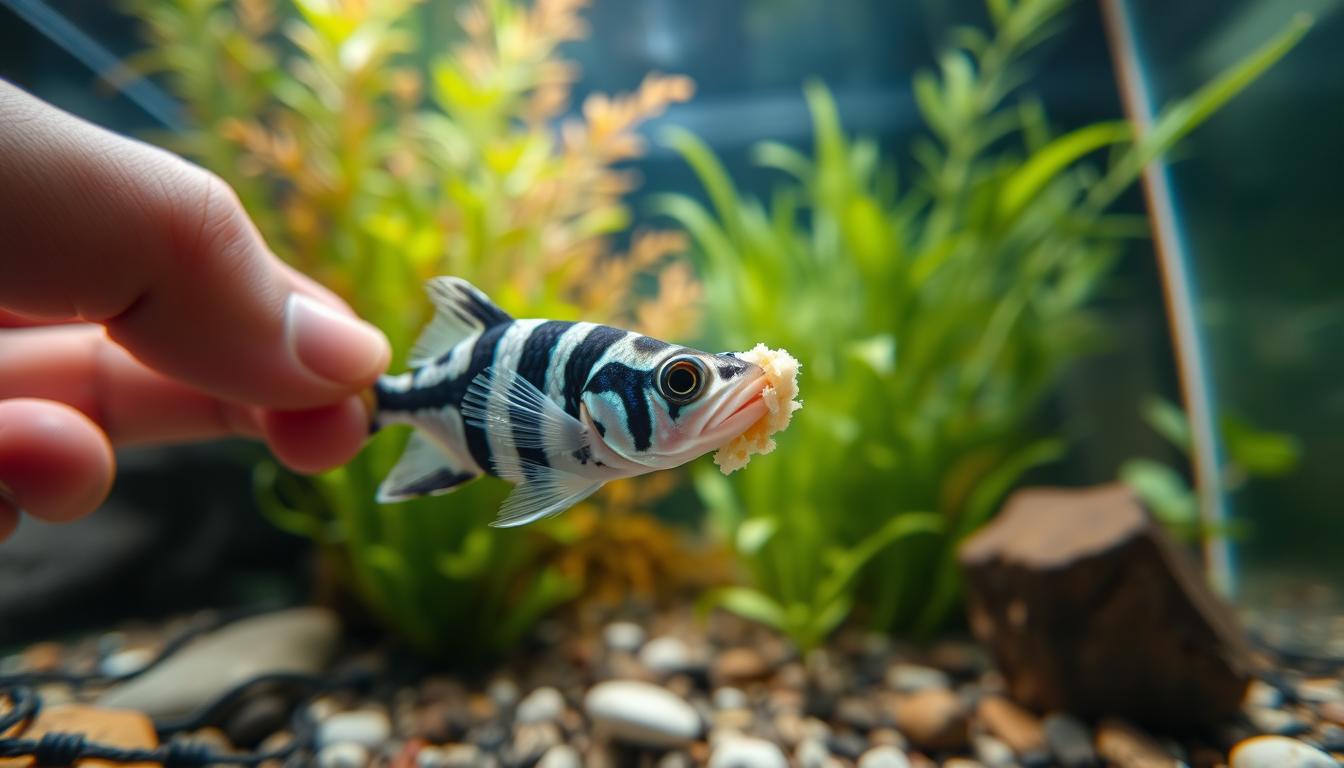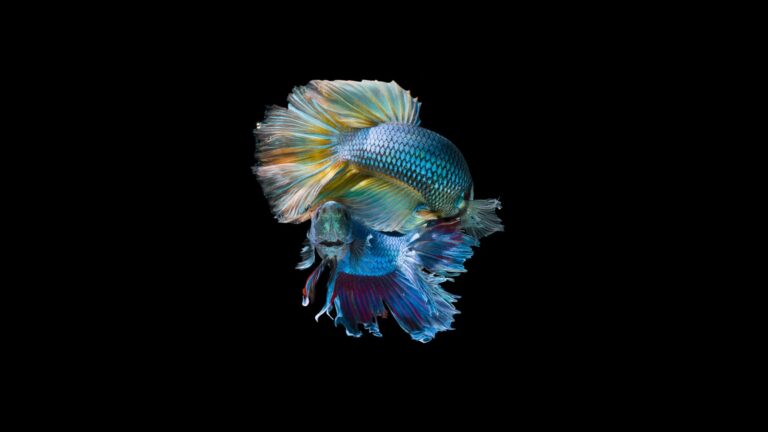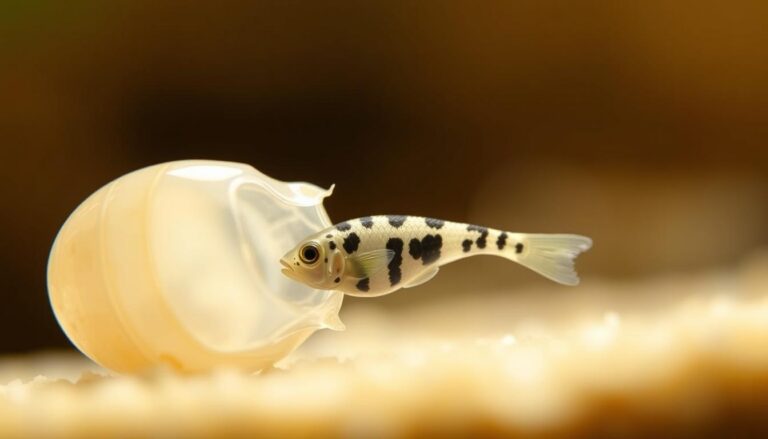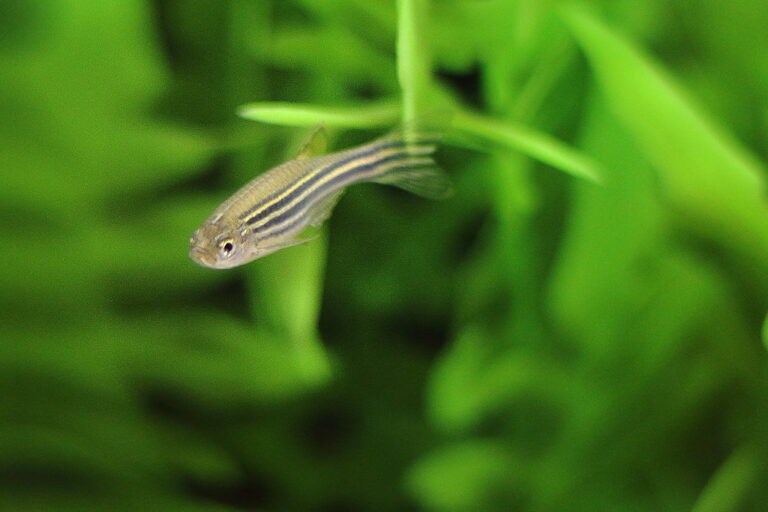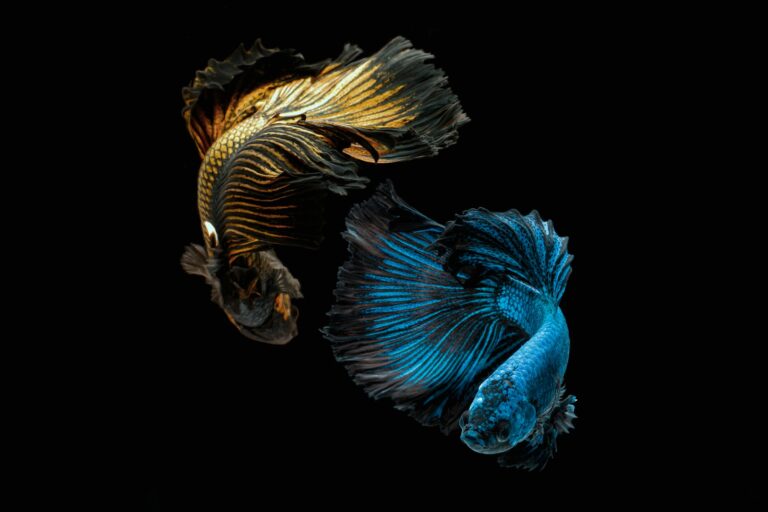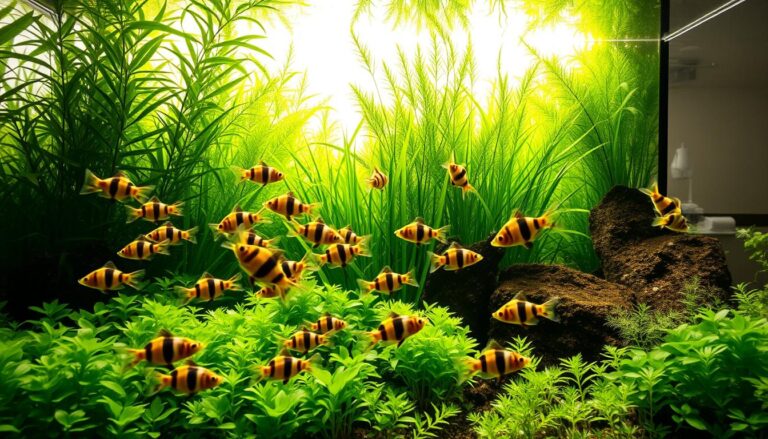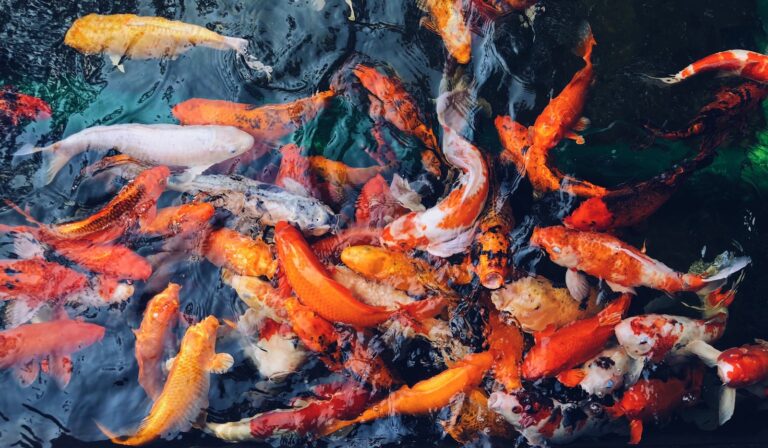Zebra Danio Fish Care: 1st Tips for a Healthy Aquarium
Did you know a single female zebra danio can lay up to 300 eggs in one breeding session? These fish are loved for their striking stripes and lively swimming. They are a favorite among aquarium hobbyists. But, their health depends on proper care.
Whether you’re starting your first tank or fixing a community aquarium, this guide helps. A well-kept tank not only increases fish life but also cuts down on sickness. Let’s dive into how to balance water, food, and tank conditions for a healthy home for your fish.
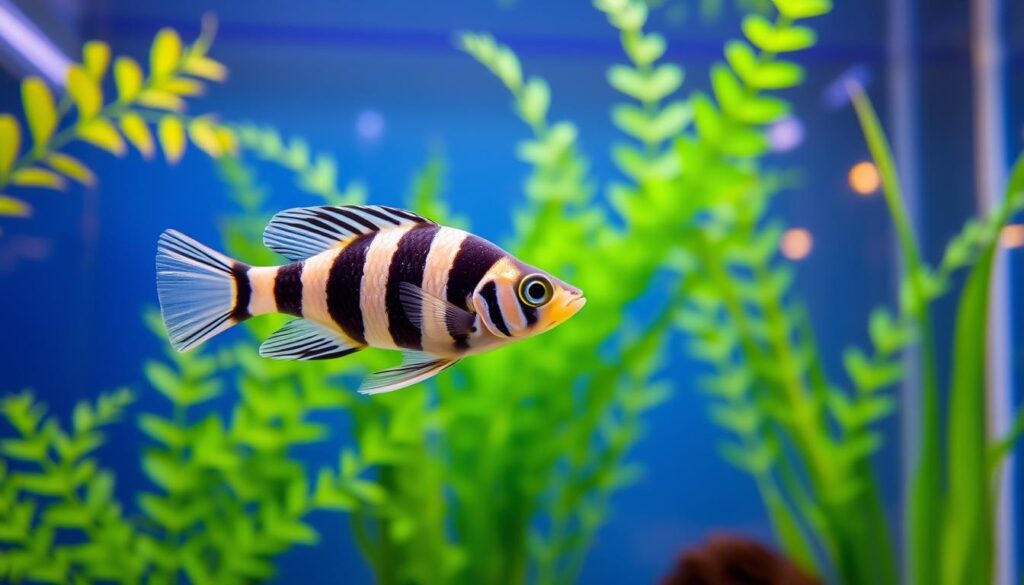
Table of Contents
Key Takeaways
- Zebra danios live 2-5 years with proper care.
- They thrive in groups of 6 or more due to schooling behavior.
- Maintain water temperatures between 64–74°F for optimal health.
- A varied diet including flakes, pellets, and live foods prevents nutritional issues.
- Regular water changes prevent ammonia spikes critical to healthy aquarium setup.
Introduction to Zebra Danio Fish
Zebra danios (Danio rerio) are small, colorful fish from South Asia’s freshwater areas. They live in rivers and slow streams, making them great for home aquariums. Knowing their danio natural habitat helps create a good home for them.
They are found in India, Bangladesh, and Nepal. They like waters with lots of plants and soft bottoms.
Origin and Natural Habitat
Wild zebra danios live in warm, slightly acidic water. They like shallow pools and rice paddies, where they swim together. Keeping their water soft and adding live plants helps them stay healthy.
They eat insects and algae, just like in aquariums.
Physical Characteristics and Lifespan
These fish have striking blue stripes. They grow 1.5–2 inches long. Males are slimmer and brighter, while females are rounder.
With good care, they can live 3–5 years. Their active swimming and schooling make them fun to watch.
Why Zebra Danios Make Great Pets
These fish are tough and easy to care for. They get along well with others and are perfect for beginners. Their playful nature and easy care make them stress-free pets.
Regular water checks and proper food keep them healthy and lively.
Setting Up the Perfect Tank for Zebra Danios
Creating a thriving environment starts with the danio tank setup. These active fish need space to swim and thrive. Let’s break down three key steps for a healthy habitat.
Ideal Tank Size and Parameters
A 10-gallon tank is the minimum, but 20 gallons or larger works best for a school. Keep water between 64–75°F and pH at 6.5–7.2. Stability in these parameters ensures stress-free living. Regular testing with kits like API’s Freshwater Master Test Kit keeps conditions consistent.
Essential Equipment for Your Danio Aquarium
Choose a filter that provides gentle water flow—sponge filters or hang-on-back models like the Fluval C4. A heater like the Aqueon 50W maintains temperature. Add a test kit to monitor ammonia and nitrite levels weekly. Lighting should mimic natural daylight, 8–10 hours daily.
Creating the Right Environment with Plants and Decor
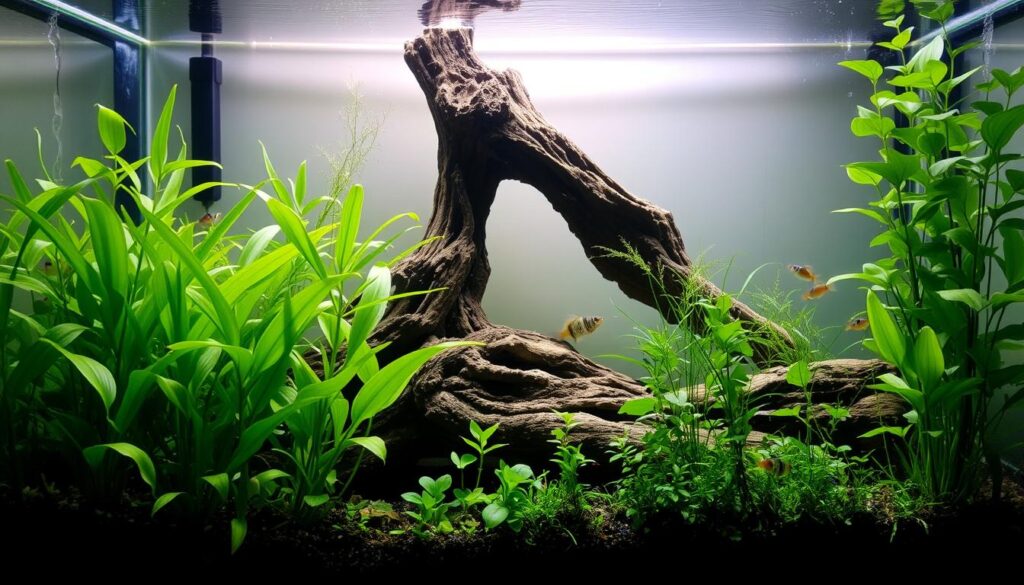
Use sand or fine gravel as substrate. Include live plants like Java Fern or Anubias for oxygen and hiding spots. Add smooth rocks or driftwood for exploration. Floating plants like Hornwort create shaded areas, reducing stress. Leave open space for swimming!
“Plants and decor not only beautify the tank but also mimic the fish’s natural streams and ponds.”
Combining these elements balances aesthetics and functionality, supporting their playful nature. Every detail in the zebra danio fish care setup impacts their health and behavior.
Water Parameters and Maintenance
Keeping the water clean is crucial for zebra danio fish care. These fish do well in stable water conditions. It’s important to keep ammonia at 0 ppm, nitrites at 0 ppm, and nitrates under 20 ppm. Regular water tests and a consistent aquarium maintenance schedule help maintain these levels.
- Test water weekly using kits to track ammonia, nitrite, and nitrate levels.
- Replace 25-30% of water weekly to dilute toxins. Use a siphon to remove debris from gravel.
- Monitor pH between 6.5-7.5 and temperature between 70–78°F for optimal danio water requirements.
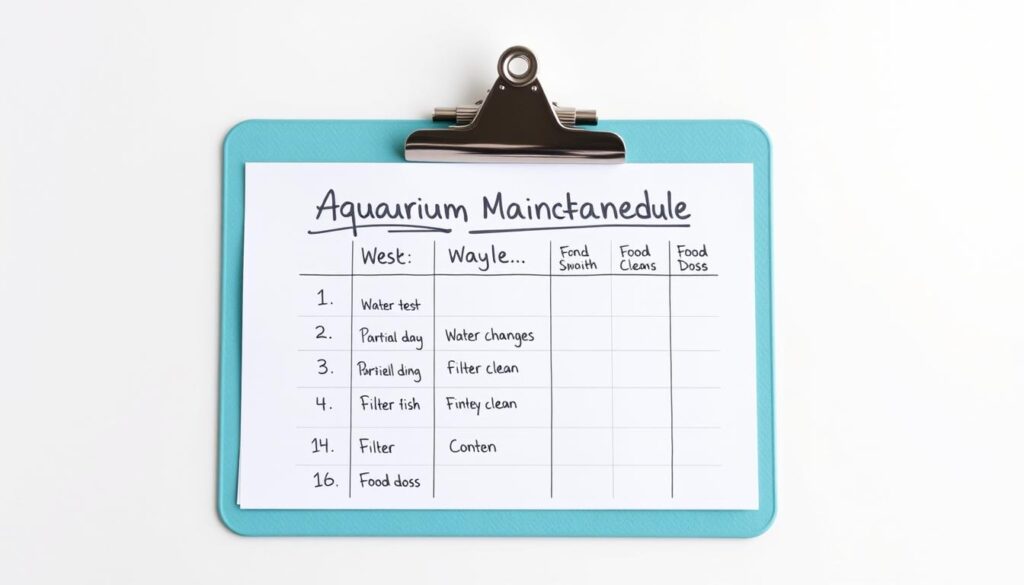
Before adding fish, cycle the tank to establish beneficial bacteria. Follow guides like Aqueon’s care resources for step-by-step cycling steps. Seasonal changes may require more frequent checks—adjust testing frequency if temperatures fluctuate. Cloudy water often signals overfeeding or poor filtration; reduce food portions and clean filters promptly.
Weekly maintenance includes scrubbing algae, checking heater performance, and replacing carbon in filters monthly. Consistency in upkeep prevents stress-related illnesses. Keep nitrate levels low by avoiding overstocking and feeding only what’s eaten in 2-3 minutes.
Complete Zebra Danio Fish Care Guide
Happy zebra danio fish need consistent care. An aquarium care schedule helps keep them stress-free. Daily maintenance and regular checks are key. Let’s go through it step by step.
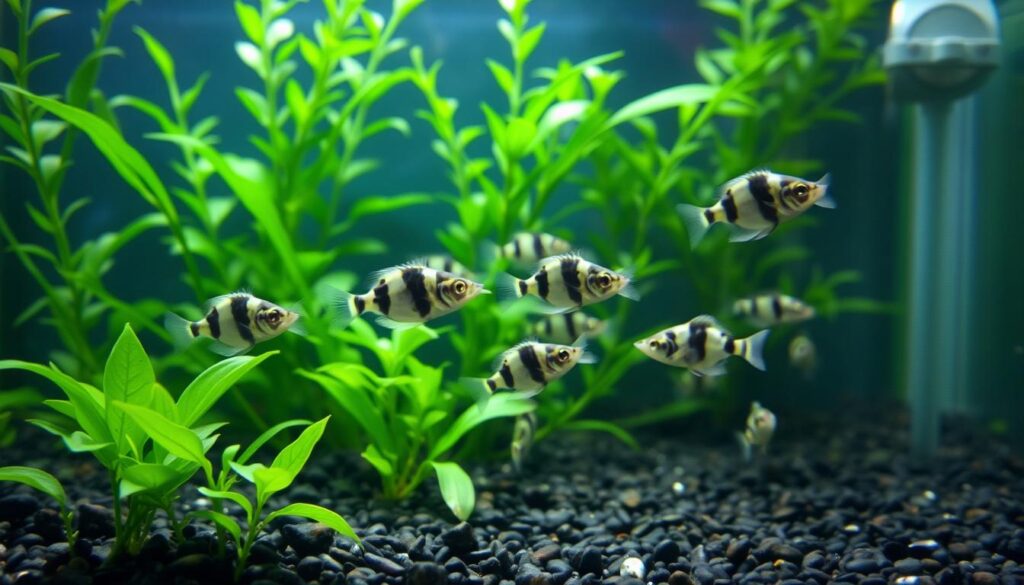
Daily Care Routine
Feed your fish twice a day with small portions of flakes or brine shrimp. Watch for abnormal eating habits. Spend 5 minutes observing their behavior. Look for signs of stress like erratic swimming or color loss.
Use a quick strip test to check ammonia levels. Keeping a journal helps track patterns.
Weekly Maintenance Tasks
- Use a gravel vacuum to clean 20% of the substrate weekly.
- Wipe algae from glass with a sponge—avoid harsh chemicals.
- Replace 25% of water, using a dechlorinator.
- Check filter media: rinse in old tank water to preserve beneficial bacteria.
Monthly Health Checks
Monthly routines are crucial for long-term health. Inspect each fish for signs of illness like torn fins or bloated bellies. Test pH, ammonia, and nitrite levels with a liquid test kit.
Disassemble filters and scrub inlets. Trim overgrown plants to keep light flowing. Schedule these steps every 28 days.
Following these routines will help your zebra danios thrive. Small actions like daily feeding and weekly water changes make a big difference. Stay observant and adjust as needed!
Feeding Your Zebra Danios
Proper zebra danio fish care begins with knowing their diet needs. A balanced danio diet keeps them energetic and colorful. Let’s dive into how to feed these lively swimmers right.
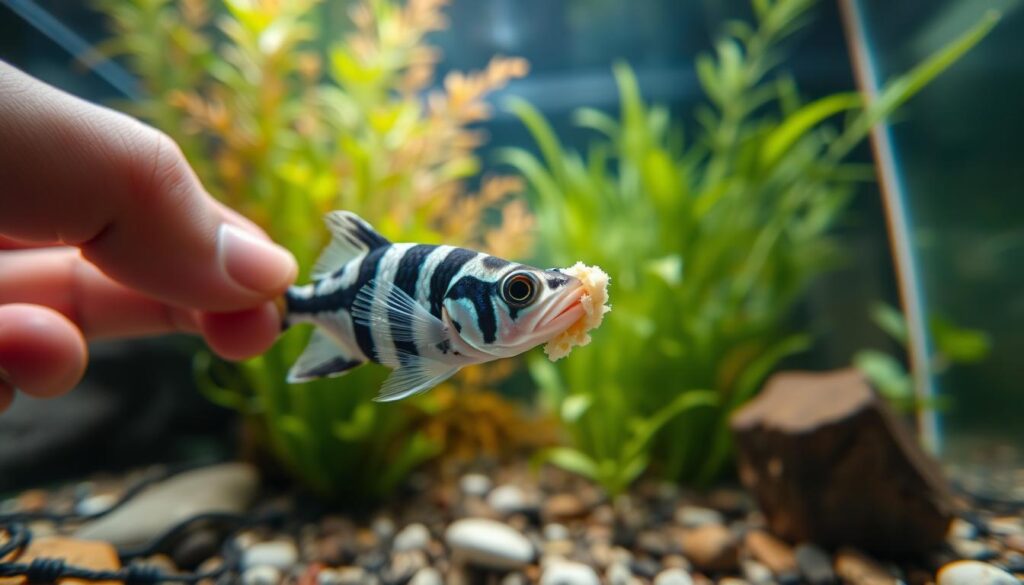
Recommended Diet and Nutrition
Zebra danios love a varied diet. They do well on:
- High-quality flakes or pellets as a mainstay
- Live/frozen foods like daphnia, brine shrimp, or bloodworms twice a week
- Vegetables such as blanched spinach or zucchini shreds
Feeding zebra danio fish a mix of foods gives them proteins, vitamins, and fiber. Here’s a feeding guide:
| Food Type | Frequency | Benefits |
|---|---|---|
| Commercial flakes | Daily | Base nutrition |
| Live/frozen treats | 2-3x/week | Encourages natural hunting behavior |
| Vegetables | Once weekly | Supplements fiber and minerals |
Feeding Schedule and Portions
Feed them small meals 2-3 times a day. Follow this:
- Give only what they can eat in 2-3 minutes per meal
- Adjust amounts based on tank size—1/8 tsp flakes per inch of fish length
“Overfeeding is the top cause of water quality issues,” say aquarium experts. Always remove uneaten food quickly.
Avoiding Common Feeding Mistakes
Be careful of these mistakes:
- Overfeeding: Leads to bloating and ammonia spikes
- Monotony: Eating only one food type can cause deficiencies
- Neglecting leftovers: Uneaten food decaying harms water quality
Making small changes in feeding can greatly improve their health and life span.
Tankmates and Community Setup
Zebra danio fish care is best in a calm community aquarium. These active swimmers do well with six to eight of their own kind. When picking compatible tankmates, look for peaceful fish that like the same water.
- Great choices: Neon tetras, harlequin rasboras, corydoras catfish, and dwarf gouramis.
- Avoid: Slow swimmers like bettas or angelfish, whose long fins may trigger nipping.
“A stable community depends on matching energy levels and space needs,” say experts. Observe fish interactions closely after introducing new species.
Quarantine new fish for two weeks before adding them to the main tank. Use plants and driftwood for hiding spots. This helps avoid fights. Make sure all fish get enough food. Don’t overcrowd, as this stresses danios—keep to one inch of fish per gallon.
Watch for fin damage or if fish hide a lot. This means they’re not getting along. By choosing the right mix of species, you’ll create a lively, peaceful space for zebra danios to thrive.
Common Health Issues and Treatment
Knowing how to care for zebra danio fish means spotting and treating health problems early. Signs like erratic swimming or loss of appetite can mean disease. Quick action can help them get better.
Signs of Illness in Zebra Danios
- Erratic swimming or floating upside down
- Visible white spots (ich) or red streaks
- Frayed or clamped fins
- Loss of color or visible growths
- Rapid gill movements or lethargy
Preventative Care Measures
To prevent diseases in danio fish, follow these steps:
- Test water weekly for ammonia/nitrite levels
- Quarantine new fish for 2 weeks
- Perform 25% water changes weekly
- Use dechlorinated water during changes
- Offer varied diet including live foods
Treatment Options for Common Ailments
| Disease | Symptoms | Actions |
|---|---|---|
| Ich | White specks on gills/body | Raise temperature to 80°F, use copper-based meds |
| Fin Rot | Split or whitish fins | Use broad-spectrum antibiotics |
| Fungal Infections | White cotton-like growths | Antifungal treatments + water changes |
| Parasites | Rubbing against tank surfaces | Quarantine and use antiparasitic meds |
Always keep sick fish separate and follow treatment instructions closely. Early treatment stops disease spread. Keep a treatment kit and a quarantine tank ready. If problems persist, see a vet.
Breeding Zebra Danios at Home
Breeding danio fish is a fun hobby that’s easier than many think. With the right setup, you can raise danio fry and watch them grow. This guide will help you ensure healthy spawns and thriving young fish.
Creating Optimal Breeding Conditions
Begin by conditioning pairs with high-protein foods like brine shrimp or daphnia. Set up a 10-gallon tank with soft water (pH 6.5–7.0) and temperatures of 78–80°F. Add spawning mops or java moss for eggs to stick to. Once eggs appear, remove parents to protect them from accidental predation.
Caring for Eggs and Fry
Eggs hatch in 48–72 hours. Keep water clean with small daily changes. Newly hatched fry need infusoria or liquid fry food for the first few days. After 5–7 days, switch to baby brine shrimp or microworms. Use a sponge filter to avoid fry getting caught in currents.
Growth Stages and Development
Fry become free-swimming by day five and grow rapidly. By week two, they eat finely crushed flakes. At 6–8 weeks, they’re large enough to join a community tank. Consistent feeding and water quality checks align with proper zebra danio fish care, ensuring strong growth. Patience and attention during these stages make all the difference!
Behavioral Patterns and Enrichment
Zebra danios are lively fish with distinct habits that shape their zebra danio fish care needs. Their behavior shows how they interact with their surroundings. These schooling fish swim in loose groups, darting between plants and exploring tank features. Their active nature means they need stimulating environments to stay healthy.
- School in groups of 6–8 to stay calm and social.
- Swim mostly in mid-to-top water levels, showing quick bursts of speed.
- Sniff for food with their barbels, preferring to feed in groups.
Enrichment keeps them engaged and reduces stress. Here’s how to create a thriving habitat:
| Strategy | Benefit |
|---|---|
| Live plants like Java moss | Provide hiding spots and natural foraging zones |
| Driftwood or ceramic caves | Create diverse microhabitats for exploration |
| Variable water flow | Mimics their native stream environments |
Regular changes to decor—like moving plants monthly—keep them curious. Avoid overcrowding, as stressed fish may lose their usual schooling patterns. Offering live foods like brine shrimp boosts their hunting instincts, part of proper zebra danio fish care. Watch for signs of stress: sudden hiding or swimming alone could signal a need for more enrichment. Small adjustments make a big difference in their well-being.
Troubleshooting Common Zebra Danio Problems
Even with the right zebra danio fish care, problems can still happen. Catching issues early can stop them from getting worse. Here are simple aquarium troubleshooting steps for common danio fish problems.
Aggression and Chasing Behaviors
Some chasing is okay, but constant fighting is a sign of stress.
- Overcrowding: Make sure you have 10-20 gallons for every 8-10 fish to cut down on stress.
- Male dominance: Having more females than males can help reduce fighting.
- Hideouts help: Add floating plants or driftwood to give fish places to hide.
Poor Coloration or Growth
Faded stripes or slow-growing fish mean there’s a problem.
- Nutrition: Change up their food with live and frozen options twice a week.
- Water quality: Check ammonia and nitrite levels weekly. Keep pH between 6.5-7.5 and temperature at 72-78°F.
- Lighting: Give them 8-10 hours of light a day with full-spectrum bulbs to make them look better.
Tank Environment Issues
Got algae or dying plants? Try these fixes:
- Overfeeding: Cut food by 20% if algae gets out of control.
- Cloudy water: Clean filters every month and vacuum the substrate weekly.
- Plant struggles: Choose hardy plants like java fern or anubias.
“Small adjustments often solve big issues. Observe, adjust, and enjoy the process!”
Conclusion: Enjoying Your Healthy Zebra Danio Community
Zebra danio fish care is rewarding but needs focus on tank setup, water quality, and their social needs. A thriving community comes from regular aquarium maintenance, like water testing and proper feeding. Watching them swim and see their stripes shows you’re doing well.
Seeing danios darting through plants or exploring their tank shows a balanced ecosystem. For beginners, starting with six to eight fish helps build confidence. Bishop Aquatics’ zebra danio guide provides detailed advice on breeding or setting up biotope tanks.
Even experienced aquarists keep learning, so don’t worry about small challenges. Healthy danios do best in groups, so choose tankmates with similar energy levels. Their playful nature makes them great for community tanks with the right tankmates.
Keeping these fish connects you to a living world. Watching fry grow or seeing their natural behaviors shows the joy of proper care. Whether you start small or grow your tank, zebra danios bring color and movement. Every lesson is part of your journey to care for aquatic life—your efforts help these striped swimmers thrive.
FAQ
What is the ideal tank size for zebra danios?
Zebra danios need a tank of at least 10 gallons. But, 20 gallons or more is better. This size helps keep them happy and healthy.
How often should I feed my zebra danios?
Feed them small amounts 2-3 times a day. This keeps their diet natural and avoids stomach problems.
What water parameters do zebra danios prefer?
They like water between 64-75°F. The pH should be 6.5-7.2. Also, keep ammonia, nitrite, and nitrates low.
Can zebra danios live with other fish?
Yes, they get along well with many fish. Look for fish that like the same water and size, like tetras and corydoras catfish.
What signs indicate that my zebra danios may be ill?
Watch for changes in swimming, loss of appetite, and fin damage. Also, look for color changes. Catching illness early is crucial.
How often should I perform water changes in my zebra danio tank?
Change 25-30% of the water weekly. This keeps the water quality good for your fish.
What are some common health issues faced by zebra danios?
They can get ich, fin rot, and fungal infections. Good water and food help prevent these problems.
How can I encourage my zebra danios to breed?
Use a separate tank with soft, slightly acidic water. Keep the temperature between 78-80°F. Also, feed them high-protein foods.
What type of decor is best for a zebra danio tank?
Choose live or artificial plants that look like their natural home. They need space to swim and places to hide.
How do I troubleshoot cloudy water in my zebra danio tank?
Cloudy water can come from waste, algae, or bacteria. Test the water, change some, and make sure your filter is working right.

